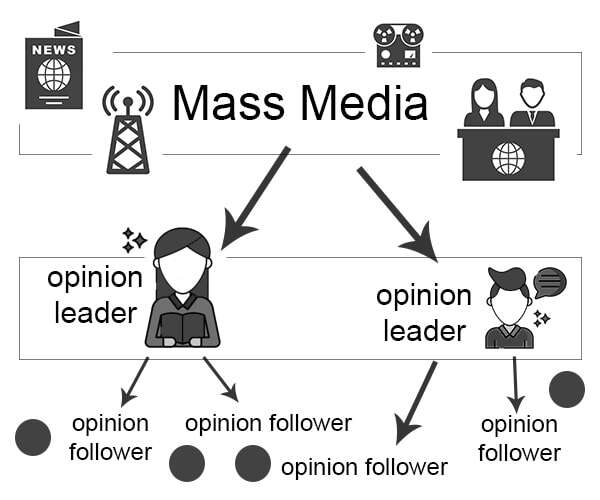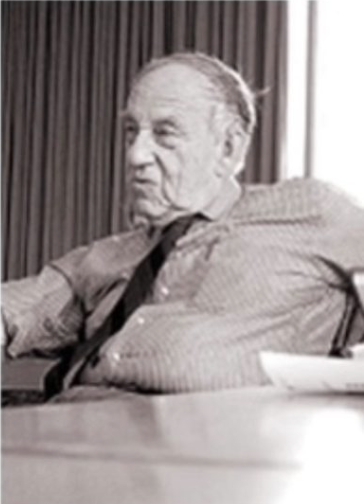The two-step flow theory proposed by Lazarsfeld, Berelson, and Gaudet in 1940 demonstrated that ideas tend to flow to opinion leaders through mass media such as newspapers and radio, and then from them to larger groups of audiences (opinion follower). Consolidating all the informationвАФverbal, visual, and textualвАФand sending it to the opinion leader, who will subsequently implant the idea in all the audiences, is the initial stage in this entire process. But there is one thing to remind, in terms of the contemporary social structure, it indicates that in the network era, individuals are more readily led by social media platforms and information from the Internet.
In addition, research has shown that the general public is more inclined to support inherent leaders, a trait that is particularly evident when applied to commercials. Commercial companies will target opinion leaders to market their products through advertising. The advertisement becomes the message mentioned in the first step, and the marketing department becomes the opinion leader, and under the propaganda and leadership of the opinion leader, the public will slowly approach to it, thus realizing the original purpose of the commercial advertisement, which is the application of The two-step flow theory in commercial advertisement.
A very famous case of The two-step flow theory applied to commercial advertising is the war between Coca-Cola and Pepsi. A little boy wanted to buy a Coke inside a vending machine, but because the vending machine was too high to reach, he bought two bottles of Coca-Cola which was used to pad his feet to buy two bottles of Pepsi. This one advert won Pepsi the majority of people’s attention that year, and also allowed Pepsi to win a brief victory in the cola market battle that year.
But Coca-Cola immediately countered back with an advert in which a little boy wanted to drink the Coca in the fridge because he was not tall enough, so he took two cans of Pepsi and put them at his feet, and the child who got the Coca, in the end, didn’t leave straight away but politely put the Pepsi back in its place before leaving. The meaning of this advert is that Coca-Cola customers are just more qualified than Pepsi customers. The advertisement succeeded in recovering the cola market, which was spiralling out of control in that year, and enabled Coca-Cola to overtake its turnover. The success of these two adverts lies in the fact that in the “second step” both companies made the message of the adverts highly visible through their status as opinion leaders.
From this case, it shows opinion leaders play a great role in the circulation of information as it spreads to the masses, and it also proves that the public are easily led by opinion leader.
References:
Adyaningtyas, F.D., 2013. An analysis on word formation used in Pepsi and Coca-cola advertisements published in United Stated from 1950 until 2012. Yogyakarta: Universitas Sanata Dharma.
Bostian, L.R., 1970. The two-step flow theory: cross-cultural implications. Journalism Quarterly, 47(1), pp.109-117.
Keller, E. and Fay, B., 2009. The role of advertising in word of mouth. Journal of Advertising Research, 49(2), pp.154-158.





A particularly clear argument. Firstly, the pioneers and definition of the two-step flow theory are introduced, the central idea of the theory is stated succinctly, and secondly, it leads to the idea that the public is more susceptible to the guidance and influence of the mass media. From the examples of Coca-Cola and Pepsi, it is clear that opinion leaders play an important role in the dissemination of information, and that the public’s choices are easily influenced by opinion makers and leaders.
Thank you, Yuwei. I think I also need to find some counter examples to critique the examples I have given, after all there are always two sides to things.
First of all, I really like the structure and ideas of your entire article, the way you proceed layer by layer to uncover the content of the two fluency theories. Especially after the simple description, the case of Coca-Cola is used for analysis, making the whole article easier to understand. Both cases use their status as opinion leaders to make it easier for advertisements to be placed in ordinary life and reach a wider audience. Secondly, I think the two-step flow theory is very common in our lives. However, with the development of society and the popularization of the Internet, I think people are now more likely to be attracted by other people’s information on the Internet. It is no longer like the past, where promotion is carried out layer by layer, but everyone can become the first layer of communication.
Indeed advertising is the best example of this theory. I also agree with your theory that everyone can be a disseminator of information, but it is important to note that there is indeed no substitute for the role played by opinion leaders, which delivers and directs information more effectively. Anyway, thank you Zijie.